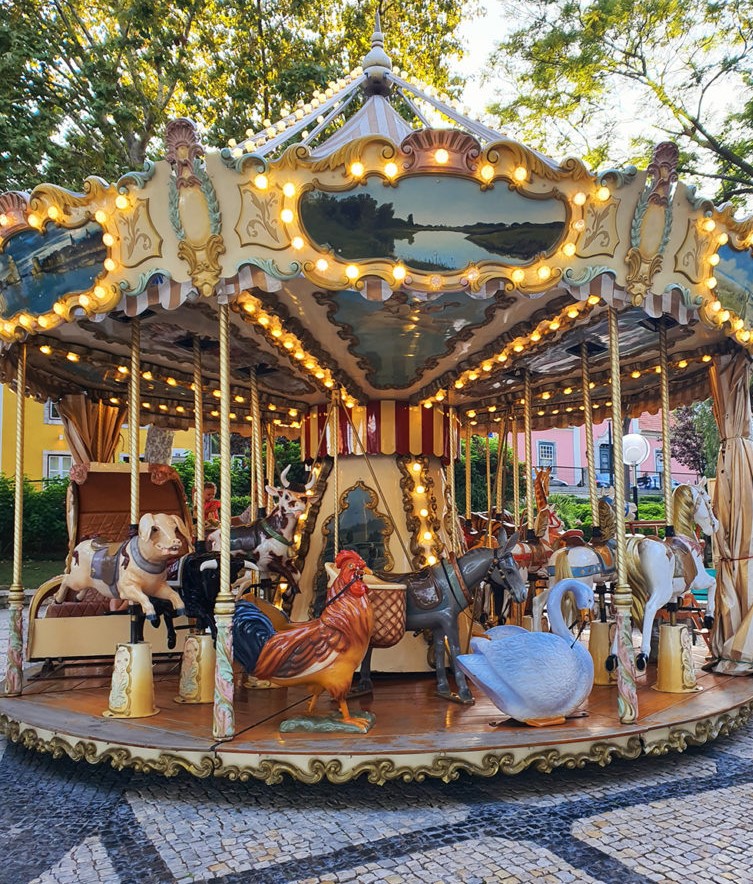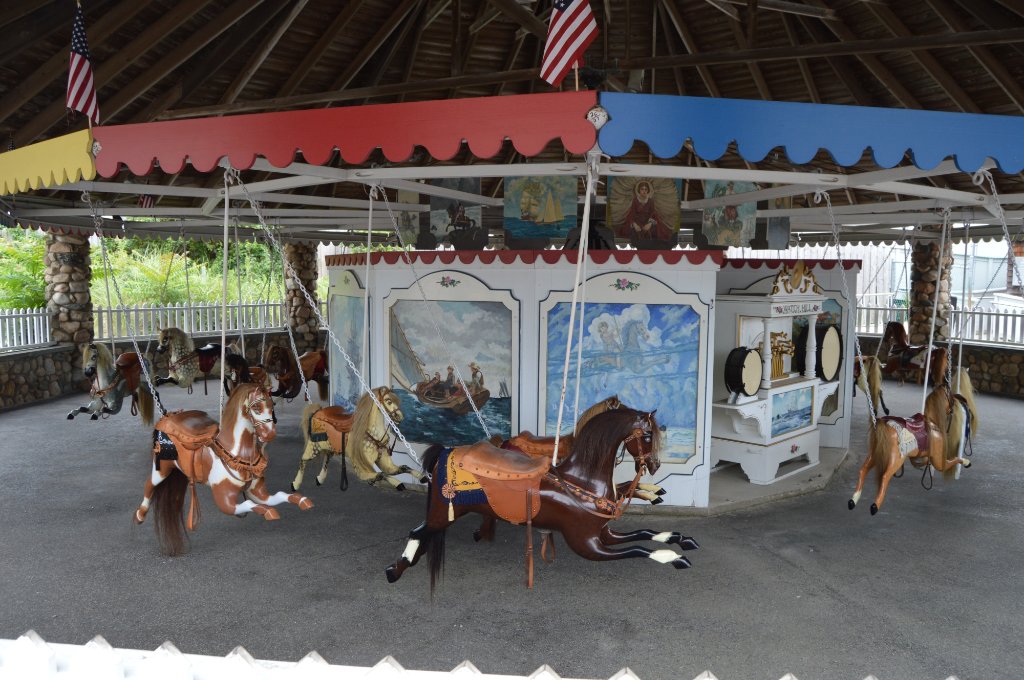This post is something of an intermezzo. The entry that follows this one will take us across the Algarve through Faro to Tavira but today, I’m going to pause in recounting my travels for a little something different. And, rather than saving it for the end, here’s some appropriate music to accompany your reading.
Those of you who looked through the photo album from Cascais might recall seeing this picture:.

As I sat along one of the squares in Lagos Sunday, I sat opposite a similar ride set up not far from the open air market.

Watching young children pulling their parents toward the ride then gleefully mounting their figure of choice, I began wondering how it is that marketers have convinced us that children need fancy, handheld electronic devices to entertain them when they clearly derive real pleasure from something as technologically simple (relatively speaking) as a carousel. (In fact, I’d had a similar thought some years ago watching children happily frolic through a fountain in downtown Silver Spring not far from where I live.) Then, I grew curious about the ride’s history. Who invented it? How old is this technology that youngsters still find fun in a concept so simple?
A brief history of the word carousel.
Etymology is often a tricky thing but still, I’m going to start with the word itself. The International Independent Showmen’s Museum asserts (and I saw this repeated in an article in Smithsonian Magazine) that a training method used by Arab and Turkish warriors in which riders tossed a clay ball filled with perfume between one another and “The player who failed to catch the ball would reek of perfume until they could wash.” was the root of the idea. It goes on to claim that the Italian and Spanish words for “little war” were respectively carosella and garosello and these then migrated into the French carousel.
The problem with this explanation is that neither of these words exist – at least in modern Spanish or Italian. In both Italian and Spanish, war is guerra and in French guerre – a term that is little changed from the French spoken in the eighth century. This reasoning is further complicated by the fact that the Arabic speaking Moors were handily defeated in the Battle of Tours in 732 and, while they dominated Iberia, they never ruled any part of France or Italy nor did the Turkic speaking Ottomans who conquered large parts of eastern Europe in the 15th and 16th centuries.
I’m more inclined to accept the history provided by etymonline –
“tilting match, playful tournament of knights in chariots or on horseback,” from French carrousel “a tilting match,” from Italian carusiello, possibly from carro “chariot,” from Latin carrus “two-wheeled wagon”.
What the two explanations have in common is that the word does seem to have military roots. Is it possible, then that the children’s ride has its source in an event that looked like this?

[Illustration from Wikimedia – Public Domain.]
Interestingly, etymonline.com goes on to cite a 1673 letter that perhaps presages the idea of a carousel as a device for amusement:
A new and rare invencon knowne by the name of the royalle carousell or tournament being framed and contrived with such engines as will not only afford great pleasure to us and our nobility in the sight thereof, but sufficient instruction to all such ingenious young gentlemen as desire to learne the art of perfect horsemanshipp.
The earliest rides.
According to an article in Popular Mechanics, the carousel began to appear as an amusement ride at European carnivals and fairs in the 19th century albeit in a construction somewhat different from the one we see today. On these early rides, rows of wooden horses hung from poles or chains from a canopy top held together by a central pole with no bottom platform. Using a hand crank or a live animal to turn the device created sufficient centrifugal force to move the horses outward more like a swing. These were often called flying horses carousels. You can visit the one in this photo in Watch Hill Rhode Island.

[Photo from Only in Your State.]
The carousel above is believed to have been built in 1867 but the breakthrough year for the carousel had come six years earlier when an Englishman named Thomas Bradshaw created the first steam powered ride that he presented at the old Pot Market in Bolton on New Year’s Day and then patented in 1863. The Smithsonian article I mentioned above quotes an English newspaper of the time describing Bradshaw’s device as “‘… [a] roundabout of huge proportions, driven by a steam engine which whirled around with such impetuosity, that the wonder is the daring riders are not shot off like cannon-balls, and driven half into the middle of next month.'”
In addition to the horses, some early carousels had animal figures that rocked back and forth while others used a grasshopper escapement attached to the platform behind each figure making them bounce forward. At the zoo in Little Rock Arkansas, you can still ride the Over the Jumps Carousel that uses an undulating wooden track to create the up and down motion.
By the second half of the 20th century, electricity replaced steam as the power source. Per Popular Mechanics, “The electric motor provides energy for both the platform—which features rollers that work like large ball bearings and allow it to turn—and the gear-driven horses, so the entire ride rotates together seamlessly.”
In 2013, the National Zoo here in Washington, DC took things a step further with its solar powered ride.
I hope you enjoyed this little diversion. In the next post we’ll get back on the road in a roundabout sort of way.